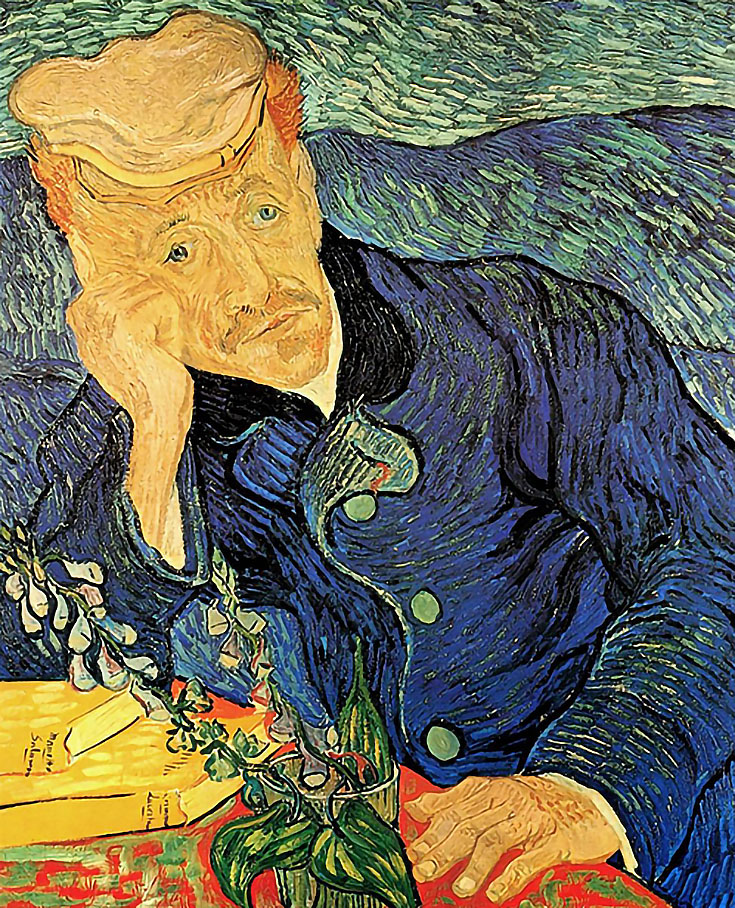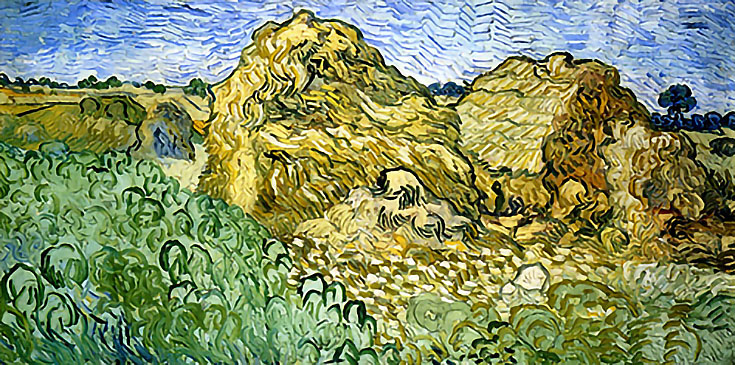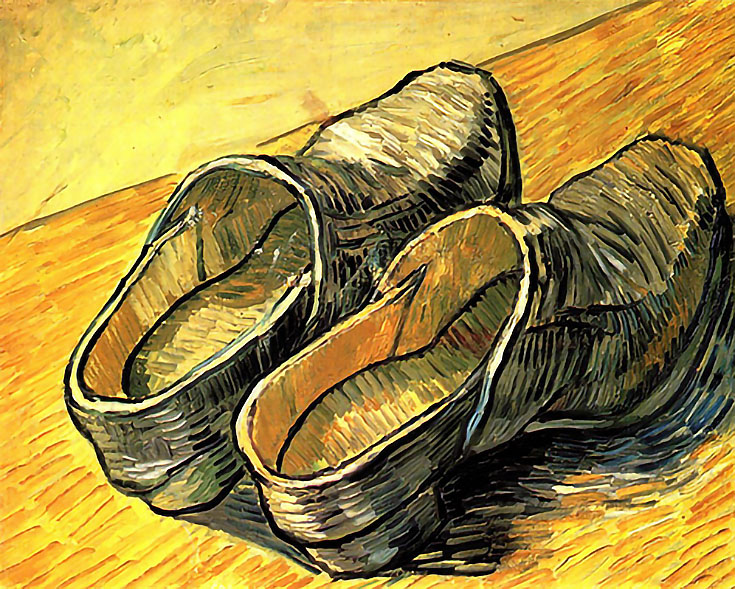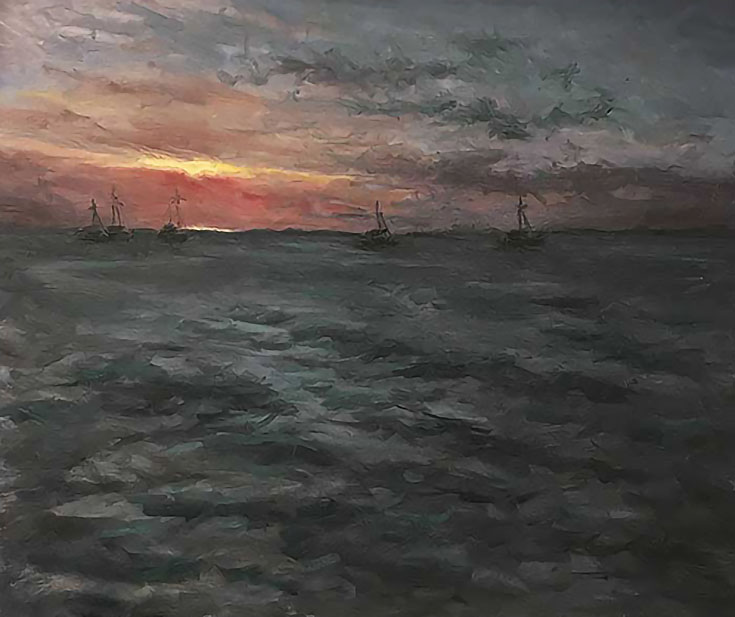Creating movement in your painting sounds great—but what does that actually mean, and how do you do it?
We all know you can’t really create movement in your paintings—everything you brush onto your canvas is physically stable and will not move once it’s dried. However, with the clever use of some compositional elements, you can at least create the illusion of movement, adding even more depth and interest to your art.
Here are several ways to create that illusion of movement in your paintings:
1. Directional brushwork
One of the most effective techniques for creating movement in your painting is to use bold and directional brushwork. By doing this, you can suggestively push your viewer around the painting as you please.
Vincent van Gogh was a genius at using directional brushwork; his paintings almost jump off the canvas at you. You can see that in each of his paintings below.
Notice how van Gogh creates variance and activity in his paintings by changing the thickness, length and direction of his strokes. Those directional lines drag you all around the painting as you follow his brushwork.
2. Contrasting smooth and impasto texture
By contrasting smooth and refined texture against impasto texture you can create an interesting depth in your painting. The illusion of movement is created as our eyes are drawn towards these areas of thicker or thinner paint.
A common technique is to use impasto texture for the foreground to contrast against a smoother middle and background.
3. Using rhythmic, or repeating elements
Every painting has an underlying rhythm much the same as a song. Rhythm can be created by purposefully arranging the elements in your painting with regard to with pattern, harmony and variance.
An example may be the intervals between negative and positive spaces. Long positive spaces (the space where subjects are placed) could be your heavy drums, short positive spaces could be the trumpets and flutes and the long negative spaces could be the silent pauses between notes.
This lends itself to the illusion of movement as our eyes dance around to the rhythm of the painting.
4. Contrasting warm and cool color temperature
Warm colors generally depict close and active environments, whilst cool colors generally depict cool and distant environments
Our eyes are attracted to warm colors, so by contrasting warm against cool colors you can create the illusion of movement as our eyes are drawn from cool areas of the painting into warmer areas of color.
In my own painting above I used bright, warm colors to drag you towards the sunset, which is contrasted against the cool, dark water.
All of these methods are powerful techniques for creating movement, but keep in mind, you don’t want to make your paintings overwhelming to the viewer. As with anything in painting, there should be a careful balance of all elements. You want to intrigue the viewer, not overwhelm them.
Here are a few additional quick tips to remember:
• Be careful not to direct your viewer’s attention right out of the canvas. You want to direct them all throughout the painting first.
• Variance is your friend. Practice varying your strokes, colors and level of detail. The more variance, the more your viewer’s eyes will dance around the painting.
• Before you start, plan where you want to take your viewer and what your focal point is. Use that plan as a guide while you paint.
I hope this helps—good luck with your next painting!
Special thanks to Dan Scott from Draw Paint Academy for sharing this post! To read more from Dan, visit drawpaintacademy.com.
This post may contain affiliate links.




